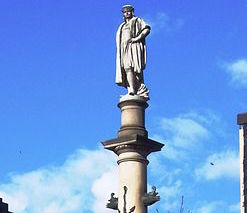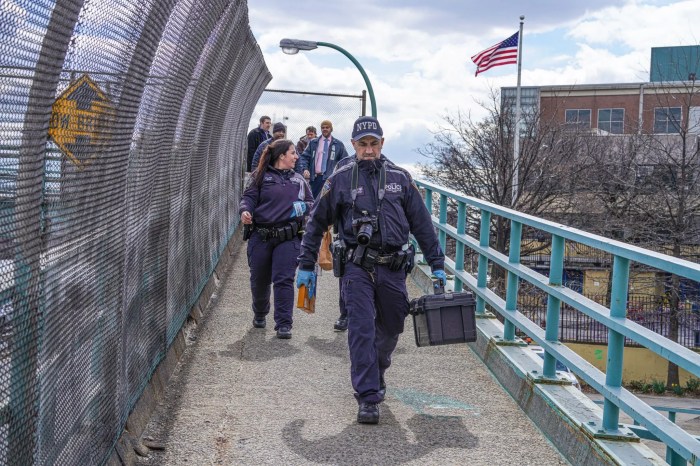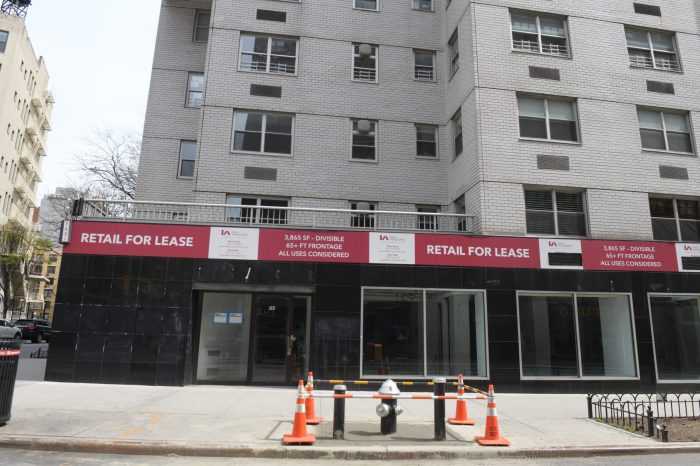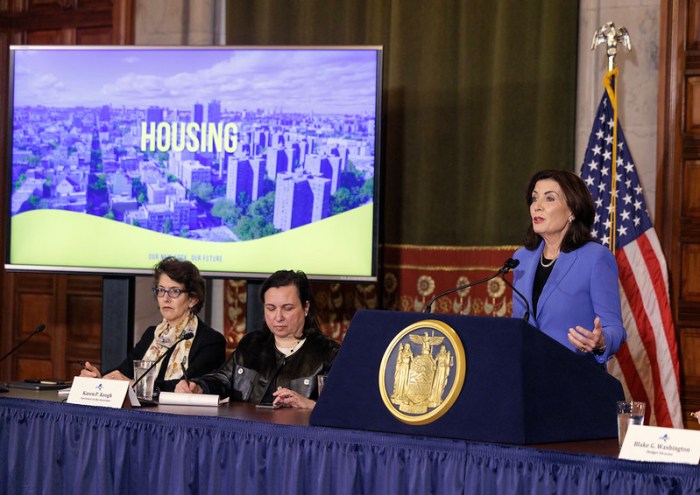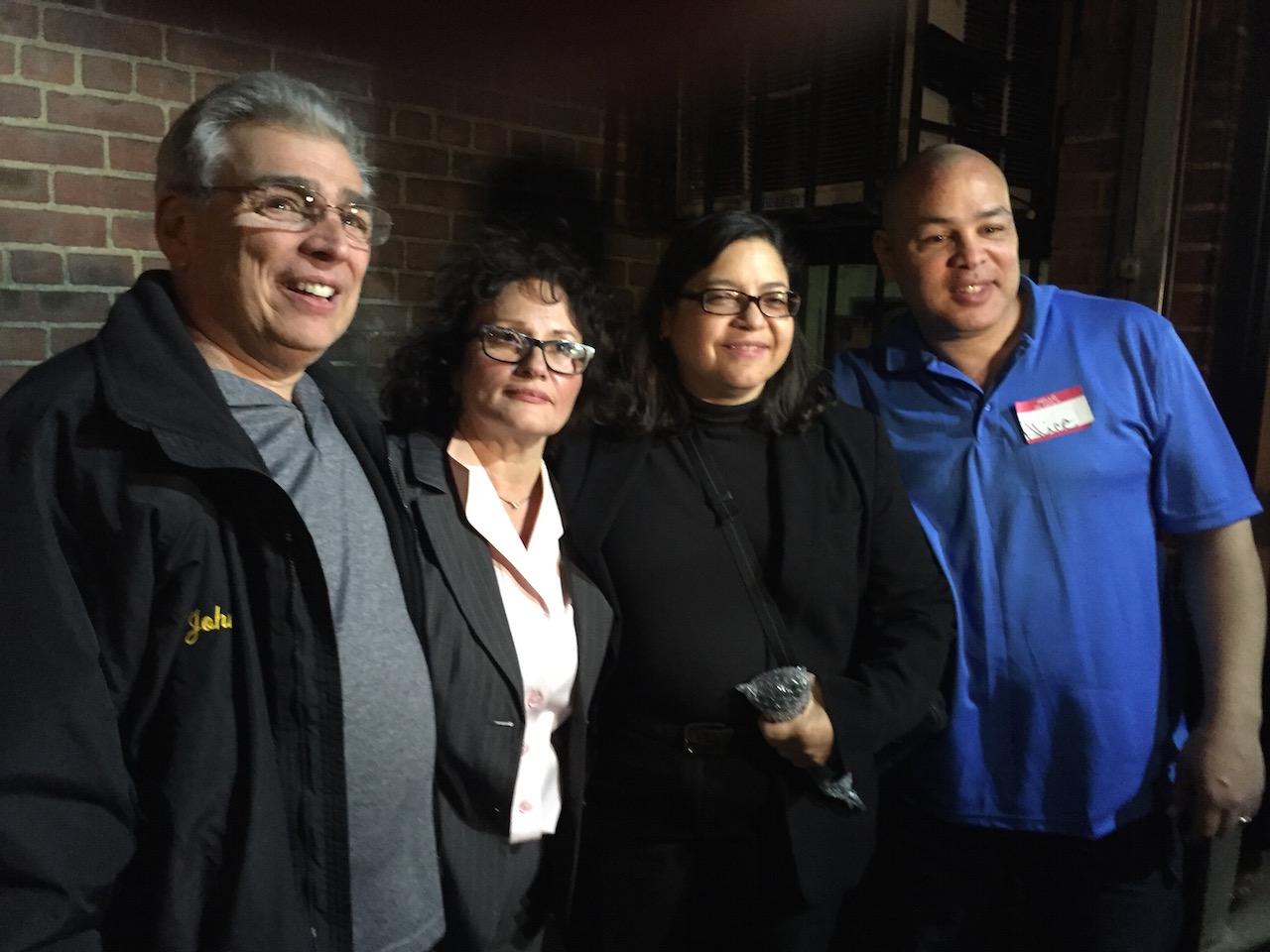
- Former District Leader John Fratta, far left, last year with, from left, Alice Cancel, Councilmember Rosie Mendez and District Leader Pedro Carti after Cancel won the special election to succeed Sheldon Silver in the Assembly. On a more current issue, Fratta is a leader in the effort to beat back politicians’ possible efforts to remove the Christopher Columbus statue in Columbus Circle.
BY LEVAR ALONZO | Updated Fri., Sept. 1: Mayor Bill de Blasio is considering a proposal to remove the Christopher Columbus statue that sits on its 76-foot tower in the middle of Columbus Circle on the Upper West Side. But a longtime Lower East Side / Civic Center activist and his Italian-American allies are vowing to fight any plans to take down the monument to the explorer.
“I am deadly opposed to idea of the removal of the Columbus statue. Columbus is a hero,” said John Fratta, who lives in Southbridge Towers near City Hall and chairs the New York State Commission for Social Justice.
“In 1920, the Ku Klux Klan fought against Columbus Day,” Fratta said. “Now, in 2017, it’s the politicians.”
The mayor has announced a 90-day commission to review all “symbols of hate” on all city property in wake of the violence at the recent white nationalist rally in Charlottesville, Virginia. The rally was a protest of the planned removal of a statue of Confederate General Robert E. Lee.
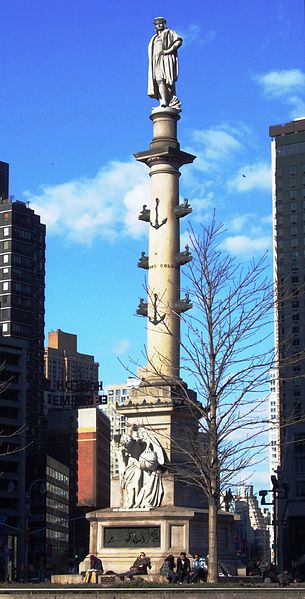
De Blasio has said that for this 90-day review, the administration is convening experts and community leaders to create evaluation guidelines for the removal or amendment of controversial public art and structures and offer recommendations on specific items. It’s the beginning framework of what would ideally be a long-term approach to the evaluation of public structures and contentious pieces of public art.
City Council Speaker Melissa Mark-Viverito has said she thinks Columbus’s history has to be looked at thoroughly.
“He is a controversial figure,” Mark-Viverito stated. “And I know that some may take offense to that. But for many of us that come from the Caribbean islands, we see him as a controversial figure.”
More recently, de Blasio said the Columbus statue might benefit from an “explanation plaque.”
“There’s more than one way to address this,” he said. “I don’t think anyone should leap to any conclusions. They should see how this commission does its work and what it presents.”
The New York Post last week reported that other “contested statues” in the Downtown area might include George Washington (a slave owner) in Union Square, Fiorello LaGuardia (“persecuted” Japanese-Americans during WW II) on LaGuardia Place, General Philip Henry Sheridan (declared, “The only good Indian is a dead Indian”) in Sheridan Square, and Peter Stuyvesant (anti- Semite, anti-Catholic) in the St. Mark’s Church in the Bowery churchyard, at E. 10th St. and Second Ave., where he is also buried. In addition, there is a statue of Henry Seward (disparaged Native Americans in Alaska) in Madison Square Park.
Correction: An earlier version of this article incorrectly said that the Henry Seward statue is in Tompkins Square Park.



